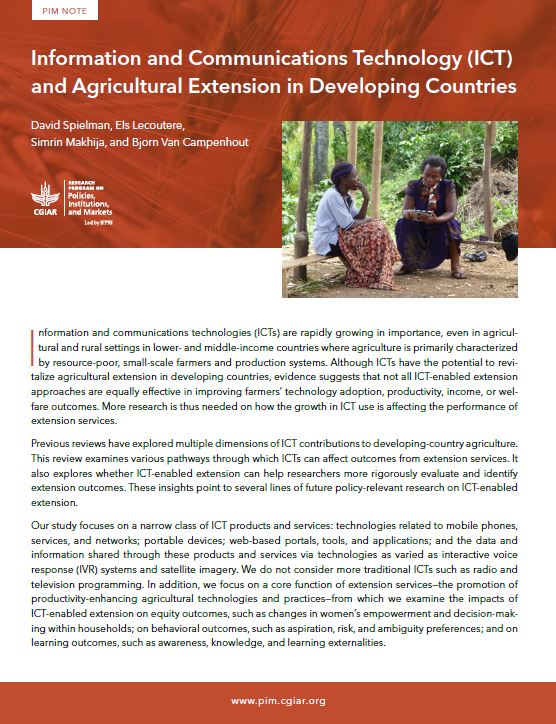Information and communications technologies (ICTs) are rapidly growing in importance, even in agricultural and rural settings in lower- and middle-income countries where agriculture is primarily characterized by resource-poor, small-scale farmers and production systems. Although ICTs have the potential to revitalize agricultural extension in developing countries, evidence suggests that not all ICT-enabled extension approaches are equally effective in improving farmers’ technology adoption, productivity, income, or welfare outcomes. More research is thus needed on how the growth in ICT use is affecting the performance of extension services.
Previous reviews have explored multiple dimensions of ICT contributions to developing-country agriculture. A recent review by David Spielman, Els Lecoutere, Simrin Makhija, and Bjorn Van Campenhout examines various pathways through which ICTs can affect outcomes from extension services. It also explores whether ICT-enabled extension can help researchers more rigorously evaluate and identify extension outcomes. These insights point to several lines of future policy-relevant research on ICT-enabled extension.
The study focuses on a narrow class of ICT products and services:
- technologies related to mobile phones, services, and networks
- portable devices
- web-based portals, tools, and applications
- the data and information shared through these products and services via technologies as varied as interactive voice response (IVR) systems and satellite imagery.
The authors do not consider more traditional ICTs such as radio and television programming. In addition, they focus on a core function of extension services—the promotion of productivity-enhancing agricultural technologies and practices—from which they examine the impacts of ICT-enabled extension on equity outcomes, such as changes in women’s empowerment and decision-making within households; on behavioral outcomes, such as aspiration, risk, and ambiguity preferences; and on learning outcomes, such as awareness, knowledge, and learning externalities.
Read the PIM Note summarizing the key points of the study, or download the full text of the article here.
Photo credit: alina/Flickr
More news from Flagship 1: Technological Innovation and Sustainable IntensificationMore from PIM on agricultural extension



